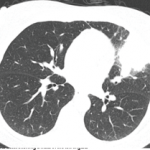Up until now, scientists have had little understanding of the molecular mechanisms behind chondrocyte enlargement or the regulation of final cell size. An understanding of the cellular processes would be one step towards modulating the growth of individual elements within an organism.
A study, published in the March 21 issue of Nature, describes the regulation of skeletal size and explores how cells sense, modify, and establish a volume set point.1 Kimberly L. Cooper, PhD, of Harvard Medical School in Boston, and her colleagues describe the multiphase process by which cell swelling allows chondrocytes to rapidly enlarge while at the same time minimizing the energetic cost of growth.
“It was expected that these cells [hypertrophic chondrocytes] enlarged by swelling, but it was very controversial,” elaborates Dr. Cooper. While plant cells are known to swell, animal cells are characterized by tight fluid regulatory mechanisms.
In order to visualize the cell swelling, the authors utilized diffraction phase microscopy and measured the dry mass of live cells they dissociated from growth plate cartilage. In addition to measuring cell size and dry mass, the authors also looked at the effects of Igf1 on the different phases of volume enlargement.
They identified three phases of chondrocyte cell growth. In the first phase, the cell maintains its initial high density of dry mass. This phase represents true hypertrophy—a proportionate increase in dry mass production and fluid uptake. In the second phase, individual chondrocytes swell by taking in extra fluid. In the third phase, they continue to increase in size while maintaining the low density first established in phase two. The duration of the final phase of volume enlargement can occur rapidly and the speed distinguishes rapidly and slowly elongating growth plates.
For example, within the same animal, the rapidly elongating proximal tibia contains large hypertrophic chondrocytes, whereas the slowly elongating proximal radius contains smaller hypertrophic chondrocytes. When the authors compared the hind limbs of two different species, the mouse and the jerboa (a rodent with elongated hind limbs), they found that, while the hypertrophic chondrocytes in the proximal tibia are similar between the two species, the metatarsal chondrocytes are strikingly different. The elongated hind limbs had individual hypertrophic chondrocytes that were 58% larger than those of the mouse.
The authors discovered that the third phase is regulated locally and is dependent of insulin-like growth factor (IGF). The data also suggest that growth plate–dependent cell size may be dependent on Igf1. “This is a kind-of unique look at the role of IGF-1 locally,” says Dr. Cooper.
